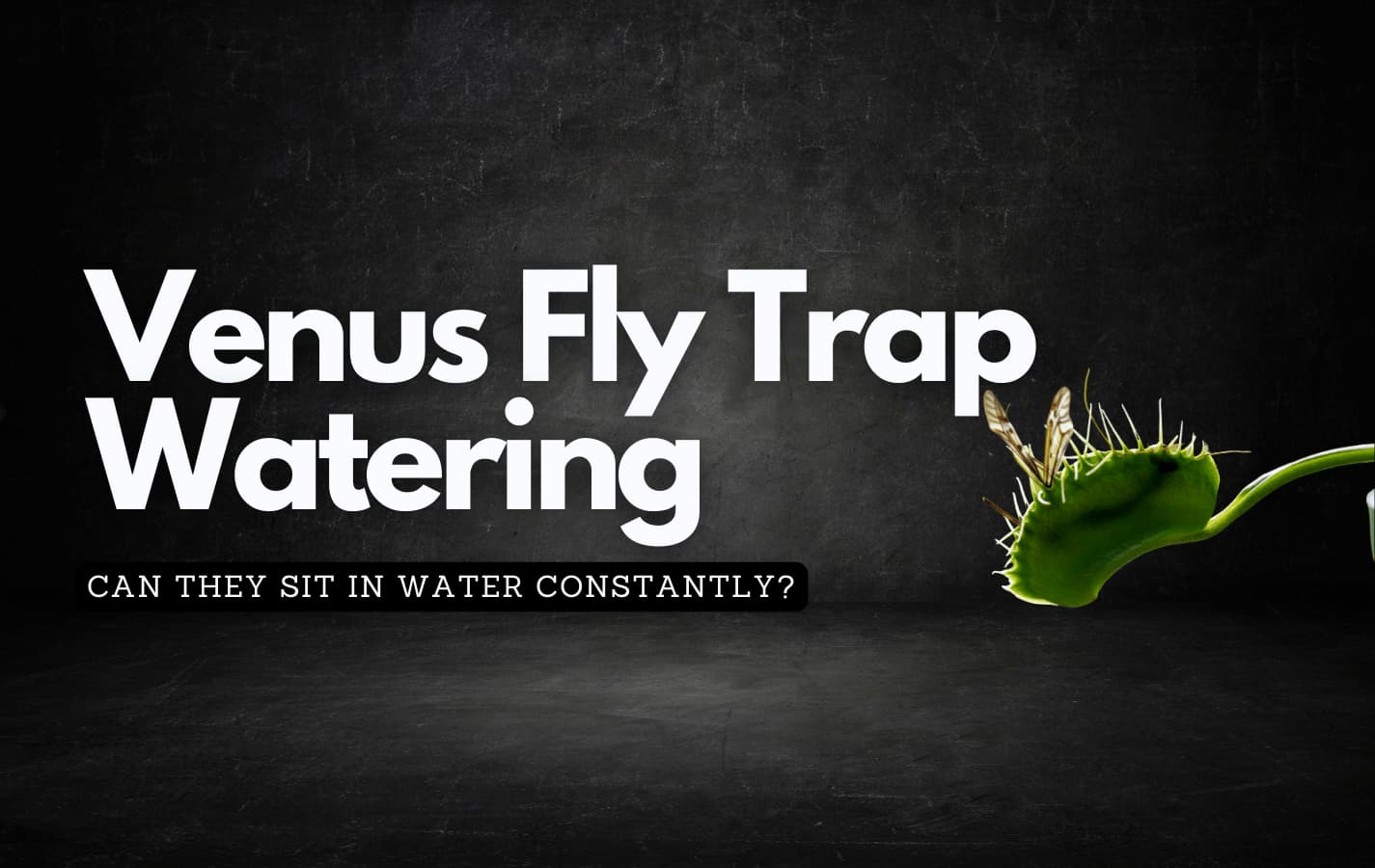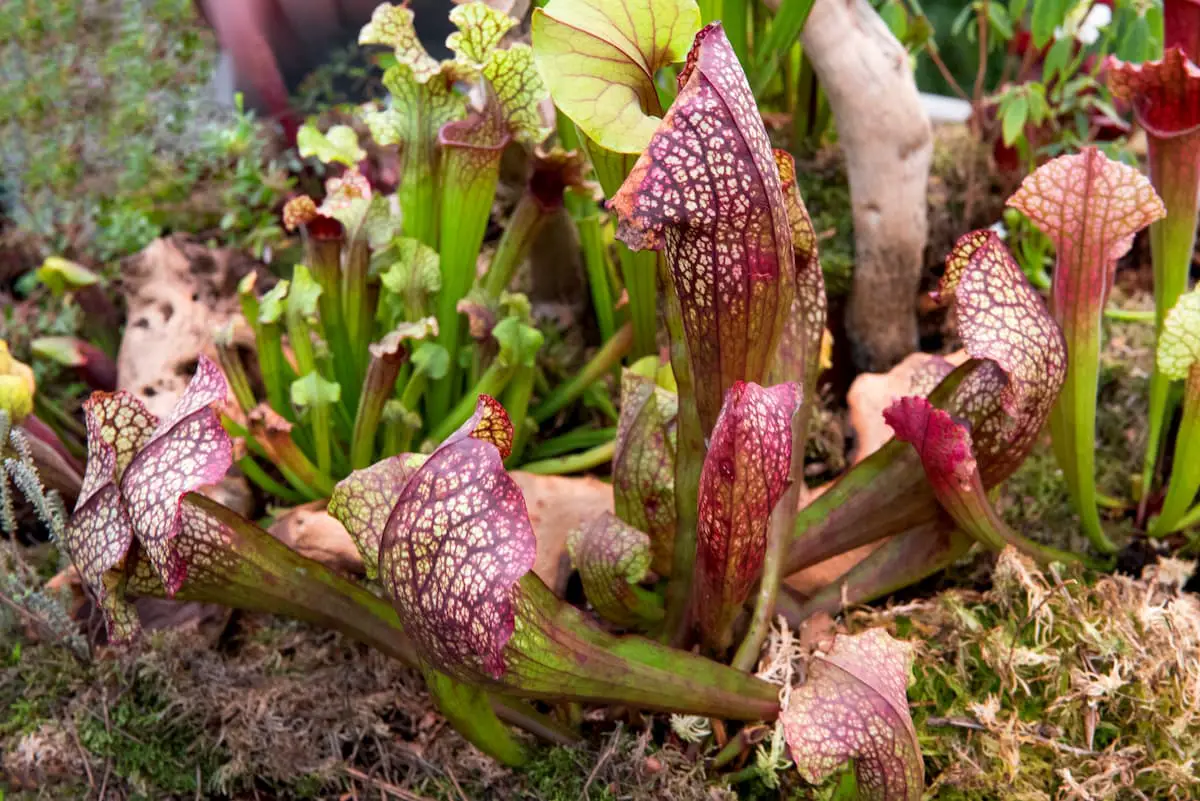Are you a proud owner of a Venus fly trap? If so, you may be wondering if it is necessary to keep your plant sitting in water at all times. The answer may surprise you.
While Venus fly traps are known for their ability to catch and digest insects, they also have specific needs when it comes to their environment.
In this article, we will explore whether or not your Venus fly trap should always sit in water and examine the reasons why.
Firstly, let’s establish what a Venus fly trap actually is. Native to the wetlands of North Carolina, this fascinating carnivorous plant captures its prey by closing its modified leaves around unsuspecting insects.
While they are easy to care for, Venus fly traps require specific living conditions to thrive. One of these conditions is moist soil.
However, there is some debate among experts as to whether or not the plant needs to be sitting in standing water at all times.
In the following paragraphs, we will examine the pros and cons of keeping your Venus fly trap sitting in water and help you make an informed decision for your own plant’s well-being.
Understanding The Needs Of Venus Fly Traps
Did you know that Venus Fly Traps are native to the boggy areas of North and South Carolina? Their natural habitat is characterized by acidic soil, high humidity, and frequent rainfall.
As a result, these plants have evolved to thrive in an environment that is constantly moist. However, this does not necessarily mean that Venus Fly Traps should always sit in water.
One important factor to consider when caring for your Venus Fly Trap is watering frequency. While it’s true that these plants require consistent moisture to survive, they are also susceptible to root rot if left sitting in stagnant water for too long.
The key is to find a balance between keeping the soil damp and preventing it from becoming waterlogged. This can be achieved by watering your plant regularly but allowing the excess moisture to drain away.
Another aspect to keep in mind is soil composition. Venus Fly Traps prefer well-draining soils that are low in nutrients.
In their natural habitat, these plants grow in sandy or peat-based soils that are highly acidic. As such, it’s recommended that you use a mix of sphagnum moss and perlite when potting your Venus Fly Trap.
This will provide the necessary drainage while also maintaining the acidity levels that these plants require.
When considering whether or not to leave your Venus Fly Trap sitting in water, it’s important to weigh the pros and cons carefully. While some growers prefer this method as a way of ensuring consistent moisture levels, there is always the risk of overwatering and root rot.
In the next section, we’ll explore some of the benefits and drawbacks of keeping your plant in standing water so that you can make an informed decision about what works best for you and your Venus Fly Trap.
Pros And Cons Of Keeping Your Venus Fly Trap In Standing Water
Understanding the Needs of Venus Fly Traps is crucial for their survival. As carnivorous plants, they require a specific type of care to thrive. One common question that people have is whether Venus Fly Traps should always sit in water.
The answer is not straightforward since there are Pros and Cons of Keeping Your Venus Fly Trap in Standing Water.
On one hand, having a constant supply of water can benefit the plant by keeping the soil moist and promoting growth.
However, too much water retention can lead to root rot or fungal infections, which can be detrimental to the health of your plant.
If you decide to keep your Venus Fly Trap in standing water, it’s important to monitor the levels regularly and ensure that they don’t exceed an inch or two.
Alternatively, there are alternatives to standing water for Venus Fly Trap care that can also provide benefits without the drawbacks of overwatering. For example, misting your plant with distilled water or placing it on a tray filled with pebbles and water can help maintain humidity levels without causing root rot.
Ultimately, making an informed decision for your plant’s health depends on understanding its unique needs and finding a balance between providing enough moisture without causing harm.
By weighing the benefits and drawbacks of different watering methods and considering alternative options, you can create a suitable environment for your Venus Fly Trap to thrive.
Making An Informed Decision For Your Plant’s Health
Watering your Venus fly trap can be a tricky task, especially if you’re new to caring for carnivorous plants. Many people assume that these plants need to sit in water all the time, but this is not necessarily true.
In fact, it’s important to find the right balance between too much and too little water.
One key factor to consider when watering your Venus fly trap is the frequency with which you do so. These plants are native to wetlands and bogs, so they do require moist soil in order to thrive.
However, overwatering can be just as harmful as underwatering. As a general rule of thumb, aim to keep the soil consistently damp but not saturated.
Another important aspect of watering your Venus fly trap is the type of soil you use. These plants prefer acidic soil with good drainage, so be sure to choose a potting mix that meets these requirements. You may also want to add some sphagnum moss or perlite to improve drainage and retain moisture in the soil.
By paying attention to your plant’s watering needs and choosing the right type of soil, you can help ensure that your Venus fly trap stays healthy and vibrant for years to come. Remember, every plant is unique, so don’t be afraid to experiment a bit until you find what works best for yours!
Frequently Asked Questions
How Often Should I Feed My Venus Fly Trap?
When it comes to feeding your Venus fly trap, the frequency will depend on a few factors like the size of the plant and its environment. Generally, a Venus fly trap can go without food for several weeks or even months, but it’s recommended to feed them once every two weeks during their growing season.
As for watering frequency, it’s important to keep the soil moist but not waterlogged. You should avoid letting your Venus fly trap sit in water at all times as this can lead to root rot and ultimately kill the plant.
Instead, allow the soil to dry out slightly between waterings, and be sure to use distilled or rainwater as tap water can contain minerals that are harmful to these carnivorous plants.
Can I Propagate Venus Fly Traps From Leaf Cuttings?
Yes, it is possible to propagate Venus fly traps from leaf cuttings.
However, it is important to follow the right propagation techniques in order to have a successful outcome.
Firstly, ensure that the leaf you are using for propagation is healthy and free from any damage or disease.
You can then either place the leaf cutting in a container of moist sphagnum moss or water until new plantlets form.
It’s worth noting that while Venus fly traps do require a lot of moisture, they should not always sit in water as this can lead to root rot and ultimately harm the plant’s health.
Can Venus Fly Traps Grow In Low Light Conditions?
Did you know that Venus fly traps can survive in low light conditions?
According to a study by the University of Minnesota, Venus fly traps exposed to low light alternatives were able to maintain their growth and catch insects just as effectively.
However, supplementing with additional lighting benefits their overall health and can result in more robust growth.
It is important to note that while they can tolerate low light, it is still necessary for them to receive some natural or artificial light for photosynthesis.
So, if you’re looking to grow these carnivorous plants indoors, consider providing them with supplemental lighting for optimal growth.
How Long Do Venus Fly Traps Typically Live?
Venus fly traps typically have a lifespan of about 20 years. However, this can vary depending on their growth patterns and the conditions in which they are kept.
While they can grow in low light conditions, they do require a certain amount of direct sunlight to thrive.
It is important to note that they should not always sit in water as this can lead to root rot and ultimately shorten their lifespan.
Proper care, including providing adequate sunlight and avoiding overwatering, can help extend the life of a Venus fly trap.
Can Venus Fly Traps Be Kept Outdoors In Colder Climates?
To properly care for Venus fly traps outdoors in colder climates, it is important to understand their winter dormancy period.
During this time, the plants will stop growing and require minimal care.
It is recommended to keep the soil moist but not wet, as too much water can cause root rot.
Additionally, it is important to protect the plants from harsh winds and frost.
While Venus fly traps do require a certain level of moisture, they do not need to always sit in water.
It is best to allow the soil to dry out slightly before watering again.
With proper outdoor care and attention during winter dormancy, Venus fly traps can thrive in colder climates.
Conclusion
In conclusion, the Venus fly trap is a fascinating and unique plant that requires specific care to thrive.
While it may be tempting to keep it in water at all times, this can actually harm the plant and lead to its demise. Instead, provide it with a moist environment by placing it in a tray of water for only 30 minutes at a time.
As you care for your Venus fly trap, you will witness its incredible ability to catch and digest insects. Watching these tiny carnivorous plants in action is like witnessing a miniature miracle unfold before your eyes.
So go ahead and give one a try – you won’t be disappointed!




Leave a Reply